Did you know that improved cylinder (IC) and skeet chokes are the top choices for hunting small, fast, close birds? Birds like quail, doves, and grouse fall into this category. These chokes are favorite picks for those who love shooting upland game birds.
The IC choke is tighter than an open bore but less than a modified or full choke. It creates a wide pattern, perfect for close hunting of small birds. Skeet chokes are a bit tighter, focusing the pattern more. This is great for birds that are really close.
IC and skeet chokes help a lot if you almost hit the bird. They’re good for birds that move quickly and are nearby. Also, you can use different shot sizes with them. This means you can pick the best pellet size for your bird.
Key Takeaways
- Improved cylinder (IC) and skeet chokes are the two best shotgun chokes for hunting small, fast, close birds like quail, doves, and grouse.
- The IC choke offers a balance between a tight and open pattern, making it versatile for close-range hunting.
- The skeet choke has a slightly tighter constriction than the IC, providing a more focused pattern for extremely short-range shots.
- Both chokes are known for their leniency, increasing the chances of hitting fast-moving, closely located birds.
- These chokes are suitable for a variety of shot sizes, allowing hunters to optimize their loads for the specific quarry.
Introduction to Shotgun Chokes
Shotgun chokes control how shot pellets spread after you pull the trigger. They come in many shapes and sizes, each designed for different tasks. As a rule, tighter chokes make the shot more focused, while looser chokes spread it out more.
Understanding Choke Constriction and Shot Pattern
It’s vital to know about choke sizes and the effect on shot patterns. For close targets, like under 20 yards, use cylinder chokes. They spread 70% at 25 yards but only 40% more at 40 yards.
Improved cylinder chokes work better at 25 yards, offering a 50% spread at 40 yards. Modified chokes suit buckshot and birdshot around 32.5 yards, with a 60% spread at 40 yards. Full chokes are best for longer shots, spreading the shot 70% more at 40 yards.
| Choke Type | Recommended Use | Shot Pattern at 40 Yards |
|---|---|---|
| Cylinder | Buckshot, Birdshot, Rifled Slugs, less than 20 yards | 40% spread |
| Improved Cylinder | Buckshot, Birdshot, Rifled Slugs, 25 yards | 50% spread |
| Modified | Buckshot, Birdshot, 32.5 yards | 60% spread |
| Full | Buckshot, Birdshot, 40+ yards | 70% spread |
Choke tubes help improve shooting at long distances. They offer hunters many choices to fit their hunting situations.
“Shotgun chokes help hunters fine-tune their shots, improving performance for every hunting situation.”
Improved Cylinder Choke: A Versatile Choice
The improved cylinder (IC) choke is a great pick for hunters who go after quick birds. It’s tighter than a shotgun’s open bore but looser than a modified choke. This means it casts a shot pattern wider than a full choke but more focused than a cylinder choke. It’s perfect for hunting quail, dove, and grouse.
Wider Pattern for Close-Range Hunting
The IC choke’s moderate constriction gives a shot pattern wider than a full choke but more focused than an open bore. This is perfect for close-range hunting. It lets you aim at swift small birds without worrying that your pellets will miss by veering off too much.
Ideal for Quail, Dove, and Grouse
The IC choke suits hunting birds like quail, dove, and grouse well. These are fast, agile birds that need accurate shots up close. The choke’s mix of a wider, still-dense pattern helps hunters hit these tough targets precisely.
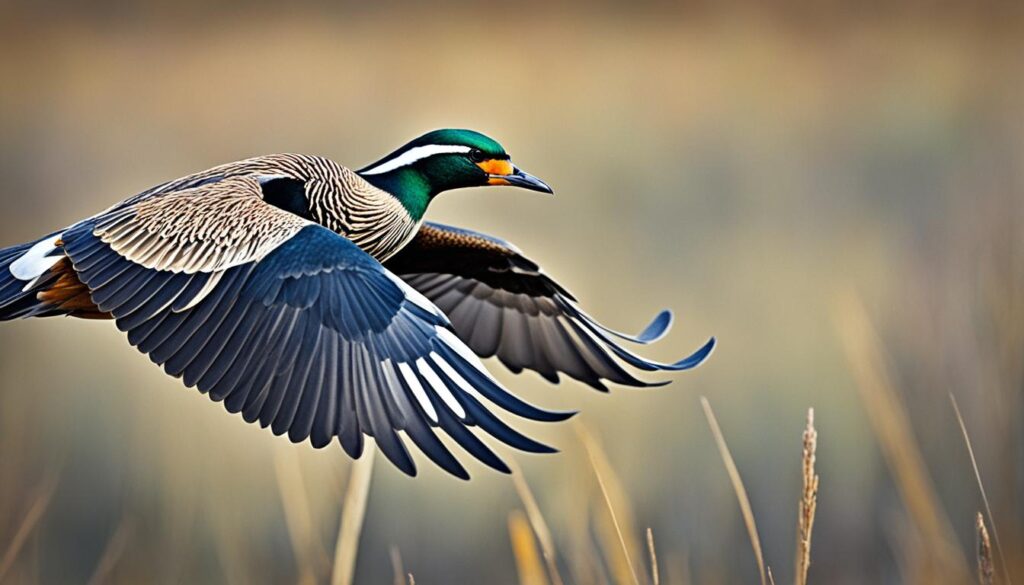
“The improved cylinder choke is a versatile choice that provides the perfect balance of pattern width and density for close-range hunting of small, fast-moving birds.”
| Choke Constriction | Pellet Spread at 40 Yards | Ideal Applications |
|---|---|---|
| Improved Cylinder | 50% in 30-40 inch circle | Quail, dove, grouse |
| Modified | 60% in 30 inch circle | Waterfowl, upland birds |
| Full | 70% in 30-40 inch circle | Turkey, trap shooting |
| Cylinder | 40% in 30-40 inch circle | Birdshot, buckshot, self-defense |
Modified Choke: Balanced Performance
The modified choke is a favorite among hunters for its balance. It works well in many hunting situations. It’s tighter than the improved cylinder, which means a more focused shot pattern. This is great for longer distance hunts.
The modified choke is not just for close-range small bird hunting. It’s a versatile choice for various games and hunts. Its balanced performance makes it popular for hunters needing flexibility and reliability.
Manufacturers like Greener made choked barrels. These barrels were great at longer ranges. For example, they could hold 210-230 No. 6 pellets in a 76 cm target at 36 meters. Chokes can increase penetration by about 20%. This is because they improve the shot’s density and pattern. It keeps more energy at longer ranges.
The modified choke is key in a hunter’s tool set. It sits between the wide patterns of the improved cylinder and the tight full choke. Choosing the right modified choke ensures balanced performance. It’s ready for all kinds of hunting.
Which Two Shotgun Chokes are Best for Hunting Small, Fast, Close Birds
For hunting birds like quail and dove up close, the improved cylinder (IC) choke and skeet choke are great choices. They help in aiming at fast and close-range targets.
Improved Cylinder and Skeet Chokes
The IC choke gives a wider shot pattern but is narrower than open bore. It’s perfect for aiming at birds that are about 25 yards away. The IC choke’s spread can make up for some aiming mistakes.
The skeet choke has a tighter shot pattern than the IC choke. This is ideal for shooting at birds very close up or those hiding in dense areas. Just like the IC choke, it helps you hit the target even if your aim isn’t perfect.
Dense Patterns for Quick Target Acquisition
Both the IC and skeet chokes create dense shots at close ranges. This density helps hunters quickly spot the target and make a good shot. It’s very useful when birds are moving fast and are hard to catch.
Overall, for shooting small, fast, and close birds, the IC and skeet chokes are your best bet. They balance the shot spread, density, and adaptability needed for this type of hunting.
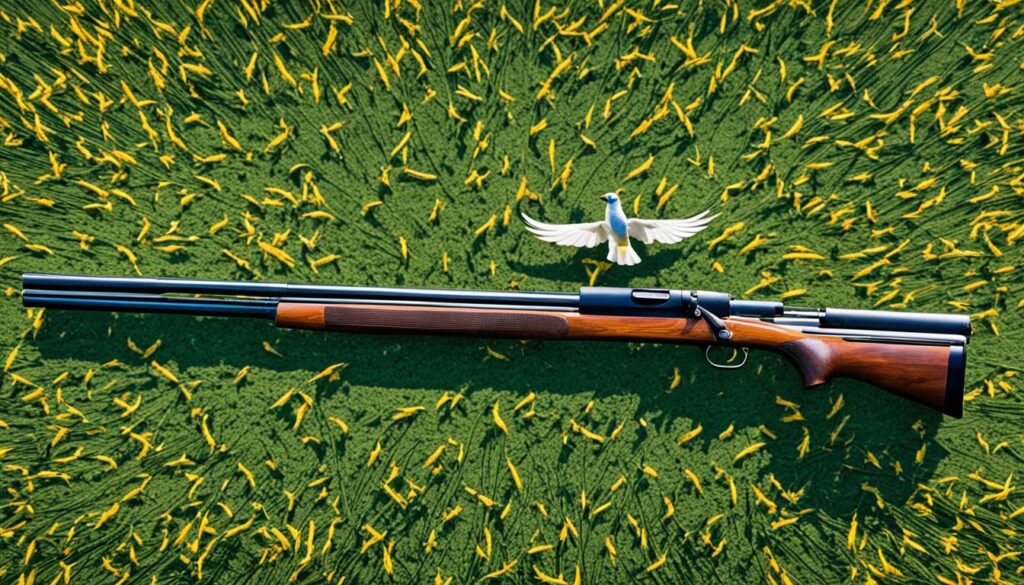
The Skeet Choke: Precision at Close Ranges
The skeet choke is ideal for hunters aiming at quick, nearby birds. It’s a bit tighter than the improved cylinder choke. This tightness means the shooter gets a focused shot pattern. It’s perfect for hitting birds that are very close, especially in thick bushes or from a hiding spot.
This narrow shot pattern helps aim fast and right on target. You won’t have to worry about hitting other things. It’s great for hunting in heavy plants where there’s a lot of quail, grouse, and smaller creatures. These creatures are more likely to be killed swiftly, and there’s less chance of just injuring them.
Tighter Pattern for Dense Cover Hunting
The skeet choke’s focused shot pattern really shines in dense areas. It allows for aiming at tiny, swift birds with more accuracy. This is key in places with a lot of brush or trees, where a stray shot might usually be more likely.
- Ideal for close-range hunting of quail, grouse, and other small, swift birds
- Tight shot pattern provides precise shot placement in dense cover
- Increased pellet density for cleaner, more humane kills
- Enables quick target acquisition and follow-up shots when needed
The skeet choke lets hunters benefit from a tight shot spread. It enhances the shooter’s skills, making it easier to hunt little, fast birds in crowded settings. Its precision and performance mean it’s a great tool for hunting small game.
“The skeet choke’s tight pattern is a game-changer when hunting quail and grouse in thick cover. The focused spread of pellets allows for quick, precise shots that consistently put birds in the bag.”
Shot Size Selection
When aiming for small, quick birds nearby, picking the right shot size is key. It helps you bring down your target precisely, whether hunting upland game or ducks.
Choosing the Right Shot Size for Your Quarry
Each type of bird may need a different shot size to hit well. Here’s a simple rule:
- Use smaller shots like #6 or #7.5 for quail, dove, and grouse.
- For bigger birds like upland game birds or waterfowl, go with #4 or #2.
Picking the right shot size for your target is key to good, ethical hunting. It helps you take down your game skillfully. This way, you can avoid harming the meat or leaving wounded animals behind.
| Game Species | Recommended Shot Size |
|---|---|
| Quail, Dove, Grouse | #6 or #7.5 |
| Upland Game Birds, Waterfowl | #4 or #2 |
So, for hunting smaller, quick birds close by, the correct shot size for your quarry is crucial. It ensures your hunt is both successful and humane if you take the extra time to match the shot size to your game.
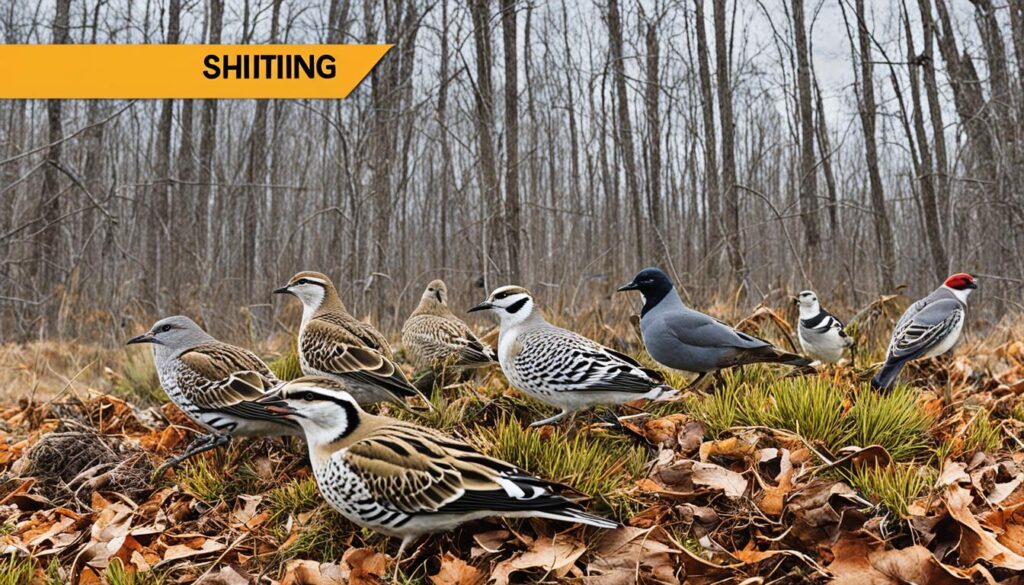
“The right shot size can make all the difference in effectively taking down your quarry.”
Patterning Your Shotgun
Patterning your shotgun is key to finding the best choke and ammo mix for hunting agile, small birds up close. By checking how your shotgun performs at different distances, you pick the choke that gives the best shot pattern. This is important for hitting your target effectively.
Doing the shotgun patterning process helps you see the shot pattern and pellet spread with various chokes and ammo types. This info is crucial for picking the right gears for your hunting. It means you can take down your prey reliably and well.
Understanding Shot Pattern Testing
To pattern your shotgun, you’ll need to follow these steps:
- Set up a target at the desired distance, typically 25-40 yards for small, fast, close birds.
- Load your shotgun with the ammunition you plan to use for hunting.
- Shoot a full choke at the target, taking note of the shot pattern and pellet distribution.
- Repeat the process with the chokes you’re considering, such as improved cylinder and skeet.
- Analyze the patterns to identify the choke that provides the most even and dense coverage for your hunting needs.
Patterning your shotgun means you get the best choke and ammo for short, fast hunting shots. This improves your chances of a clean shot.
“Patterning your shotgun is an essential step in preparing for a successful small game hunt. It allows you to identify the choke and ammunition that work best for your specific firearm and hunting conditions.”
Shot pattern testing is a key part of getting better at hunting. By investing time in patterning your shotgun, you improve your shot accuracy and hunting ethics for small, quick targets.
Steel vs. Lead Shot
Choosing between steel and lead shot is vital for hunting small, quick, and nearby birds. Knowing the differences helps you perform better.
Understanding the Differences
Steel shot makes a tighter pattern than lead. In thick bushes, a tight pattern is better to hit your mark. But, lead shots have more force and pellets, which could mean more kills.
Compensating for Steel Shot Performance
To switch from lead to steel shot, you might need to use bigger shot sizes. Going up two or three sizes from lead can balance out the energy loss in steel. This maintains your power against speedy birds.
For instance, if you usually shoot size 7.5 lead, use size 5 or 4 steel for quail or dove hunting.
| Ammunition Type | Typical Shot Size | Shot Pattern | Penetration Power |
|---|---|---|---|
| Lead Shot | 7.5 | Wider | Higher |
| Steel Shot | 5 or 4 | Tighter | Lower |
Knowing about steel and lead shots helps adjust your hunting game. It ensures you make successful shots on small, fast, and nearby birds.

Hunting Strategies for Small, Fast Birds
Hunting small, fast birds needs special skills. To catch them, you must watch carefully, move without noise, and shoot fast and accurate. These are key to a good hunt.
To hit the birds right, aim a bit ahead of them. This way, you make a sure shot. Knowing how birds move and act, like quail, dove, and grouse, is also critical. It lets you guess their next move, helping you succeed.
- Develop a keen eye for spotting small, fast birds in the field.
- Move quietly and stealthily through the cover to avoid startling the birds.
- Be prepared to make quick, accurate shots at close range.
- Aim slightly ahead of the bird’s flight path for effective shot placement.
- Understand the natural behaviors and flight patterns of your target species.
By getting good at these strategies, you’ll catch more birds like quail, dove, and grouse. Remember, being patient, practicing, and knowing your prey well are key. They’ll make you a better hunter of small birds.
“The most important thing in hunting small, fast birds is being able to anticipate their movements and react quickly. It takes time and experience, but it’s a skill that can be honed with practice.”
Safety Considerations
When you hunt small, fast, and nearby birds, always put safety first. Focus on proper handling of firearms. Follow ethical hunting rules and know what’s around you. These steps make hunting safe and fun.
Responsible Hunting Practices
Ethical hunting goes beyond the law; it’s a must for every true hunter. It involves:
- Obeying all hunting rules and guides
- Keeping your guns in top shape and using them carefully
- Ensuring you kill in a way that’s quick and not cruel
- Valuing the land and the rights of fellow hunters
- Watching out for dangers like weather and sharing hunting spots with others
These rules lead to a safer, kinder, and more fun hunt for everyone.
“The true conservationist is a man who knows that the world is not given by his fathers, but borrowed from his children.” – John James Audubon
Good hunting manners keep you safe and show love for the game, nature, and animals. Choosing safe and ethical hunting ways also helps the tradition of hunting last. It’s about preserving what we love in hunting for the future.
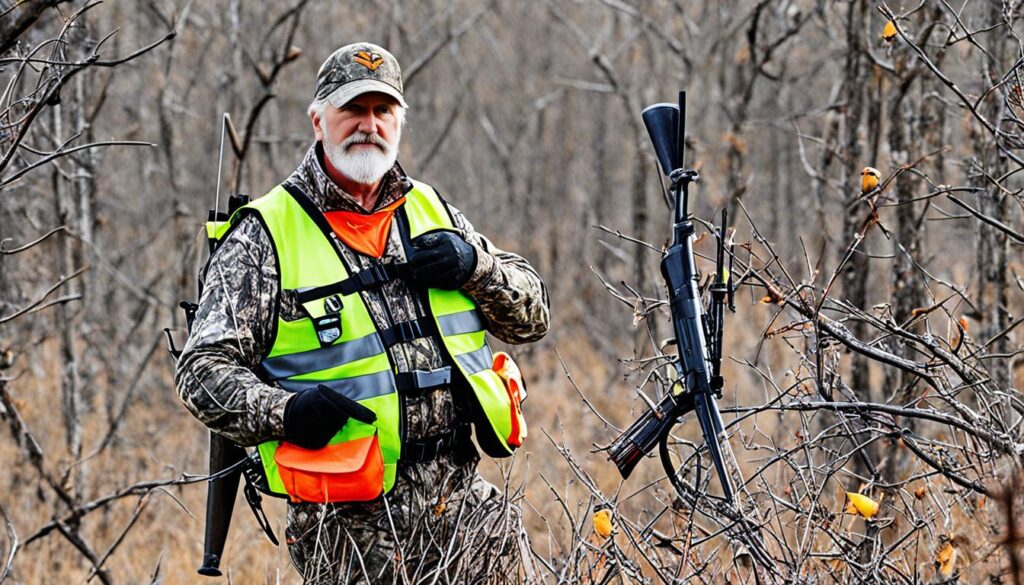
Firearm safety is key in hunting. Keep your guns well-maintained and handle them carefully. Checking your shotgun often, picking the right ammo, and loading correctly lessens accidents. This keeps hunting both safe and enjoyable.
Choke Maintenance and Care
Caring for your shotgun’s choke is vital for its long-term use and reliability. Regularly clean the choke to remove residue. Check for any damage or wear, and replace the choke when needed. This care will improve the performance and lifespan of your choke.
Always start by checking the gun’s manual for the best way to clean and care for your chokes. You will usually need a bore brush and special solvents. These tools help get rid of fouling and residue. Don’t forget to apply choke lubricant after cleaning to keep things running smoothly.
Keep an eye on your choke’s condition by inspecting it often. Watch out for cracks or unusual wear that could affect its performance. Swapping out a damaged choke ensures your gun shoots well and stays safe.
If you have screw-in chokes, they need little maintenance. Still, check their tightness every 100 shots. This keeps them secure and your shots consistent. These efforts matter a lot when hunting birds that are small, quick, and close.
By sticking to these care tips, your shotgun’s chokes will last longer and perform better. Your hunting experiences will be more rewarding, shot after shot.
Conclusion
The best shotgun chokes for hunting small, quick, close birds are the improved cylinder (IC) choke and the skeet choke. These chokes help you hit your target more easily. They make your shots tighter and more focused at close distances. This is perfect for birds like quail, dove, and grouse.
It’s also very important to hunt safely and ethically. Choose a choke that matches how you hunt and the birds you’re aiming for. Think about the pattern’s tightness, how far your shots can reach, and what size shot you’re using. This helps you set up your gun the best way for hunting small birds well.
Whether you’ve been hunting for years or are just starting, shotgun chokes are key. The IC and skeet chokes can really improve your hunting. Use them with a good game plan to catch more of your favorite birds.
FAQ
Which two shotgun chokes are best for hunting small, fast, close birds?
For hunting birds that are small, quick, and close, the improved cylinder (IC) choke and skeet choke work best.
Why are the improved cylinder (IC) choke and the skeet choke effective for hunting small, fast, close birds?
The IC and skeet chokes give strong, focused shots close up. This helps you aim quickly and hit birds like quail, dove, and grouse.
How does the improved cylinder (IC) choke perform for hunting small, fast, close birds?
The IC choke is great for up-close small game hunting. It gives a wide but tight shot pattern, improving your aim.
What are the advantages of the skeet choke for hunting small, fast, close birds?
The skeet choke has a bit tighter shot pattern than the IC choke. It’s perfect for close shots on birds in cover or from a blind.
How does shot size selection impact hunting small, fast, close birds?
Choosing the right shot size is crucial for hunting certain bird types. Use smaller shots for birds like quail, dove, and grouse, and bigger ones for larger game or waterfowl.
Why is patterning your shotgun important for hunting small, fast, close birds?
Testing your shotgun’s performance helps find the best choke and ammo for bird hunting. It lets you set up your shotgun to take precise close shots.
What are the key considerations when using steel or lead shot for hunting small, fast, close birds?
Switching to steel from lead might need a bigger shot size. Steel patterns tighter but lead has more power and more pellets.
What hunting strategies and techniques are important for effectively hunting small, fast, close birds?
Hunting these birds needs special tactics. Watch carefully, move without noise, be ready for quick shots, and know your targets’ habits.
What are the key safety and responsible hunting considerations when hunting small, fast, close birds?
Staying safe and ethical is key in bird hunting. Follow hunting laws, handle guns right, watch out for dangers, and aim for a humane shot.
How do you properly maintain and care for shotgun chokes?
Looking after chokes keeps your shotgun working well. Clean them often, check for damage, and replace them as the manufacturer suggests.
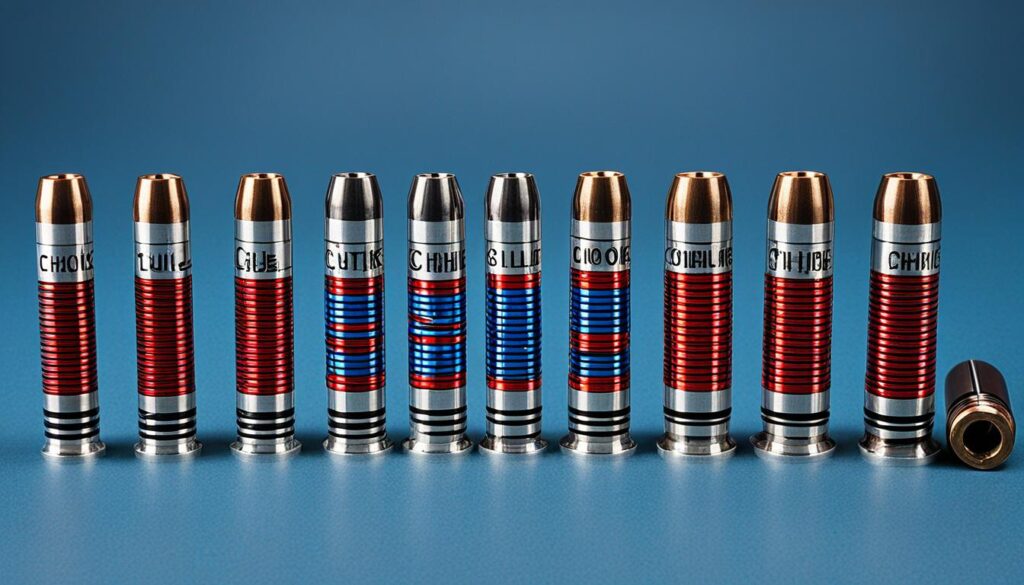

Howdy! Do you know if they make any plugins to help with
Search Engine Optimization? I’m trying to get my site to rank for some targeted
keywords but I’m not seeing very good gains. If you know of any please share.
Appreciate it! I saw similar art here: Wool product
Hey there! Do you know if they make any plugins to assist with Search Engine Optimization? I’m trying to get my website to rank for
some targeted keywords but I’m not seeing very good results.
If you know of any please share. Appreciate it!
I saw similar art here: Code of destiny
I am extremely impressed together with your writing skills and also with the layout to your
weblog. Is this a paid subject matter or did
you modify it your self? Either way stay up the excellent quality writing, it’s uncommon to look a great weblog like this one these days.
TikTok Algorithm!
I’m really inspired together with your writing abilities as smartly as with the layout to your weblog. Is this a paid topic or did you modify it your self? Anyway keep up the excellent high quality writing, it’s rare to peer a great weblog like this one these days. I like talkbirds.com ! It is my: Fiverr Affiliate
I’m really inspired along with your writing abilities and also with the layout for your
weblog. Is that this a paid subject matter or did you modify it yourself?
Either way keep up the nice quality writing, it’s uncommon to
peer a nice weblog like this one nowadays. Tools For Creators!